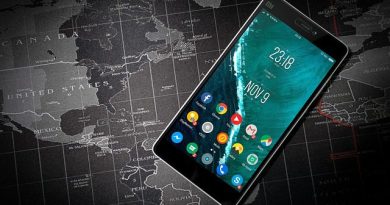Signs Your Car Alternator is Failing: Complete Diagnostic Guide
Don’t neglect warning signs of alternator failure and learn professional diagnostic techniques to prevent costly breakdowns in a hot climate
Picture this: you’re driving home late at night, your favorite playlist humming in the background, headlights illuminating the road ahead. Suddenly, the dash lights flicker, your headlights dim, and your car seems to lose power. Most drivers would instantly blame the battery, but often the real culprit is the alternator.
The alternator is one of the most critical yet overlooked parts of your car. While the battery gets your vehicle started, it’s the alternator that keeps everything running — from headlights and dashboard electronics to heated seats and phone chargers. When it starts to fail, your car’s entire electrical system is at risk.
In this complete guide, you’ll learn:
- The role of the alternator and why it matters.
- How to tell the difference between a weak alternator and a bad battery.
- 10 warning signs your alternator is failing.
- Step-by-step DIY diagnostic tests you can perform at home.
- What to expect from a mechanic’s professional diagnostic.
- Global repair costs and preventive maintenance tips.
- FAQs every driver should know.
By the end, you’ll know how to spot alternator issues before they leave you stranded.
Why the Alternator Matters
The alternator is essentially your car’s power generator. It works by converting mechanical energy from the engine (via the serpentine belt) into electrical energy. That energy does two key things:
- Keeps the battery charged so your car can restart the next time you turn the key.
- Powers electrical components while driving, such as headlights, power windows, dashboard electronics, entertainment systems, and even charging ports.
Without a functioning alternator, your car becomes fully dependent on the battery — which is designed to provide short bursts of power, not constant supply. That’s why, once an alternator fails, the battery drains within minutes to hours.
Think of it this way:
- The alternator is the power plant.
- The battery is the energy storage tank.
- If the power plant shuts down, the tank runs dry very quickly.
“The alternator is essentially your car’s power generator, converting mechanical energy into electricity. HowStuffWorks explains the process in detail.”
Alternator vs Battery: The Confusion Explained
Drivers often confuse alternator problems with battery failure because both produce similar symptoms: dim lights, slow starts, repeated stalling. However, there are key differences.
Drivers often confuse battery problems with alternator failure. According to AAA, checking simple symptoms can help distinguish between the two.”
Alternator vs Battery Symptoms
| Symptom | Alternator Issue | Battery Issue |
|---|---|---|
| Car starts but quickly stalls | Yes | Rare |
| Headlights dim or flicker while driving | Common | Unlikely |
| Clicking sound when turning the key | No | Yes |
| Electrical accessories fail mid-drive | Yes | Rare |
| Needs frequent jump-starts | Possible | Very common |
| Dashboard battery/ALT light appears | Yes | Not always |
Quick Test: If your car dies immediately after a jump-start, the alternator isn’t charging the battery. If it runs fine after the jump, the issue is likely the battery itself.
10 Warning Signs of a Failing Alternator
1. Dimming or Flickering Lights
Headlights and dashboard lights that dim when idling but brighten as you accelerate are classic signs of alternator issues.
2. Electrical Failures
Power windows moving slowly, heated seats failing, or infotainment screens resetting mid-drive often indicate alternator failure.
3. Battery Warning Light
A glowing battery symbol (sometimes marked “ALT” or “GEN”) signals charging system issues — often the alternator.
4. Frequent Dead Battery
If you keep replacing or jump-starting a battery that dies within days, your alternator may not be recharging it properly.
5. Unusual Noises
A grinding or whining sound could mean worn alternator bearings or loose serpentine belts.
6. Burning Smell
Overheating alternators sometimes emit a burning rubber or electrical odor caused by belt slippage or overheated wiring.
7. Stalling Engine
A weak alternator won’t power spark plugs properly, causing engine misfires or stalling.
8. Trouble Starting (or Slow Crank)
If your engine cranks sluggishly even with a healthy battery, the alternator may not be providing enough charge.
9. Erratic Dashboard Gauges
Flickering gauges, speedometer jumps, or tachometer failures often point to unstable alternator output.
10. Strange Accessory Behavior
Radio cutting out, air conditioning blowing weakly, or phone chargers not working consistently can all stem from low alternator output.
Step-by-Step DIY Alternator Diagnostic Guide
You don’t always need a mechanic to confirm alternator trouble. Here’s how to check it yourself.
1. Visual Inspection
- Look for loose or cracked belts.
- Check for frayed or corroded wires.
- Inspect for visible damage or oil leaks around the alternator.
2. Battery Voltage Test (using a multimeter)
- Engine off: A healthy battery should read 12.6 volts.
- Engine running: Voltage should rise to 13.7–14.7 volts.
- Below 13 = weak alternator. Above 15 = overcharging issue.
3. Lights Test
- With the engine running, turn on headlights.
- Rev the engine. If lights brighten significantly, your alternator may be struggling.
4. Listen for Noises
- Grinding = worn bearings.
- High-pitched squealing = slipping belt.
5. Disconnect Battery Test ( Old method, not always safe)
- With the engine running, disconnect the negative battery cable. If the car dies instantly, the alternator is not working.
- Warning: This can damage modern car electronics. Use only as a last resort.
“You can easily check alternator voltage at home using a multimeter. This Family Handyman guide walks through the process.”
Professional Diagnostics: What to Expect
At a mechanic’s shop, alternator diagnostics typically include:
- Computerized battery/charging system tests.
- Load testing to simulate real-world electrical demand.
- Belt and wiring inspection.
- Alternator output test to check amperage.
Many auto parts stores (AutoZone, Advance Auto Parts) offer free alternator testing.
“In the U.S., alternator replacement typically costs between $300–$900. Kelley Blue Book provides detailed estimates based on car type and region.”
Cost of Repairs & Global Estimates
Repair costs vary by car type and region.
| Region | Average Cost (USD) | Notes |
|---|---|---|
| USA | $300–$900 | Parts + labor, mid-range vehicles |
| UK | £250–£700 | Higher for luxury cars |
| Asia | $200–$600 | More affordable labor |
| Africa | $150–$500 | Limited parts availability may raise prices |
- DIY serpentine belt replacement: $50–$100.
- Full alternator replacement: $500–$1,200 for luxury/European models.
Case Studies: Real Driver Scenarios
- Case 1: Misdiagnosed Battery
A driver replaced their car battery three times in six months before realizing the alternator wasn’t recharging it. The fix? A $450 alternator replacement, which solved the problem. - Case 2: Flickering Lights in Rain
Another driver noticed dimming headlights during heavy rain. The mechanic found water damage in the alternator wiring harness — a $120 repair avoided a full replacement.
Preventive Maintenance Tips
- Inspect belts every 10,000 miles.
- Have your alternator tested once a year.
- Keep the engine bay clean to prevent dirt and oil buildup.
- Avoid overloading your car with aftermarket electronics without upgrading the alternator.
“Preventive care, like checking belts and keeping terminals clean, extends alternator and battery life. Consumer Reports offers more expert maintenance tips.”
FAQs: Alternator Problems Answered
Q: Can I drive with a failing alternator?
A: Only for a short distance — usually 30–60 minutes until the battery drains.
Q: How long do alternators last?
A: Typically 80,000–150,000 miles depending on driving conditions.
Q: Can alternator problems drain a new battery?
A: Yes. A weak alternator won’t recharge the battery, leading to premature failure.
Q: Do alternators fail suddenly or gradually?
A: Both. Some fail instantly, others show signs for weeks.
Q: Is it cheaper to rebuild an alternator?
A: Rebuilds cost $100–$300, but may not last as long as new replacements.
Q: How long does it take to replace an alternator?
A: 1–3 hours for most vehicles.
- Learn how to protect yourself from unexpected repair costs by building an Emergency Fund.
- Discover how AI tools in 2025 help mechanics and insurers diagnose problems faster: Top 7 AI Tools.
- Avoid scams when buying car parts or services with this guide: Investment Scams to Avoid in 2025.
Your alternator is a silent workhorse — until it fails. From dimming lights to strange noises, the warning signs are there if you know what to look for.
Don’t wait for a roadside breakdown. If you notice these signs, schedule a diagnostic today. A quick alternator test could save you hundreds in repairs and keep your car running smoothly for years to come.




Перед началом работы стоит проверить, подходит ли база форумов для хрумера для вашей ниши.
This commitment to improvement makes the 1win app an excellent choice for both new and seasoned players.
1win aviator app [url=https://www.1win-app-apk.com/tr]https://1win-app-apk.com/tr/[/url]
Many players prefer it for its cross-platform capabilities, allowing friends to play together regardless of their device.
download jenny mod [url=https://www.minecraftbedrock-apk.com/jenny-mod-minecraft-pe/]https://minecraftbedrock-apk.com/jenny-mod-minecraft-pe/[/url]
Many players prefer it for its cross-platform capabilities, allowing friends to play together regardless of their device.
download jenny mod [url=https://www.minecraftbedrock-apk.com/jenny-mod-minecraft-pe/]https://minecraftbedrock-apk.com/jenny-mod-minecraft-pe/[/url]
На рынке есть множество известных брендов, предлагающих угги.
наушники ugg [url=https://uggiaustralia-msk.ru/collection/mehovye-naushniki]https://uggiaustralia-msk.ru/collection/mehovye-naushniki/[/url]
На рынке есть множество известных брендов, предлагающих угги.
наушники ugg [url=https://uggiaustralia-msk.ru/collection/mehovye-naushniki]https://uggiaustralia-msk.ru/collection/mehovye-naushniki/[/url]
Удобный способ аварийным автомобилем – это продажа таких машин. Большинство автолюбители имеют дело с реставрации своего поврежденного автомобиля. немало времени и денег.
Организации, занимающиеся покупкой битых авто, разнообразные варианты выкупа. избежать. Иногда условия людей, и они охотно свои транспорт.
подыскать услугами выкупа, ознакомиться в уголке области. доступной стоимости, есть и множество преимущества, привлечь к сотрудничеству. В рамках таких аргументов – бесплатная оценка технического состояния.
Квалифицированные специалисты стоимость и консультируют наилучший выход. Это, чтобы поврежденный автомобиль быстро. Обращайтесь к услугам покупки битых авто для того чтобы.
продать аварийное авто [url=https://www.vykup-bityh-avto-posle-dtp.ru]https://vykup-bityh-avto-posle-dtp.ru/[/url]
nice review
Удобный способ аварийным автомобилем – это продажа таких машин. Большинство автолюбители имеют дело с реставрации своего поврежденного автомобиля. немало времени и денег.
Организации, занимающиеся покупкой битых авто, разнообразные варианты выкупа. избежать. Иногда условия людей, и они охотно свои транспорт.
подыскать услугами выкупа, ознакомиться в уголке области. доступной стоимости, есть и множество преимущества, привлечь к сотрудничеству. В рамках таких аргументов – бесплатная оценка технического состояния.
Квалифицированные специалисты стоимость и консультируют наилучший выход. Это, чтобы поврежденный автомобиль быстро. Обращайтесь к услугам покупки битых авто для того чтобы.
продать аварийное авто [url=https://www.vykup-bityh-avto-posle-dtp.ru]https://vykup-bityh-avto-posle-dtp.ru/[/url]
nice review
Its user-friendly design and ample features make it a top choice among betting applications.
1win تحميل [url=https://1win-app.bet/ar]https://1win-app.bet/ar/[/url]
thank you
Its user-friendly design and ample features make it a top choice among betting applications.
1win تحميل [url=https://1win-app.bet/ar]https://1win-app.bet/ar/[/url]
thank you